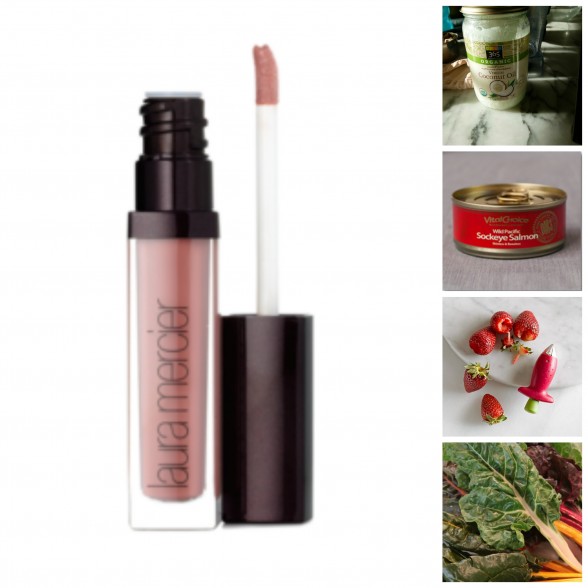
Happy Friday! I hope you had a great week. I just completed a really interesting experiment called “Cooking My Kitchen.” Almost a month ago I was pulling together my list of dinners to make for the upcoming week and the accompanying grocery list to go with it. But when I looked in my freezer, refrigerator and pantry, I was skeptical that I could fit any new food into my kitchen because everything was already packed to the brim! What was I thinking?? So I decided not to go grocery shopping for as long as possible, but use what I had. I did have a few weekends out of town, so it’s hard to say how long I actually went living off what we already had, but it was so good for me to get back in touch with not being wasteful, be more creative in the kitchen and finally have a clean, organized pantry where there is a space for everything.
I recently had to buy fresh produce and eggs since we were completely out of all fruit, both fresh and frozen, and I do enjoy a scramble at least once per week. But, I still am using up the grains, frozen meats and fish, and even winter squash that I still have. Just something to think about!
Here are five favorites of mine that I’d like to share with you today!
Vital Choice Canned Salmon
A lot of you probably know by now that I only buy and use fish from Vital Choice, a company that sells sustainable, truly wild, superior quality seafood that is flash frozen/canned shortly after harvest. Vital Choice prides themselves on selling the highest quality, lowest mercury, and most nutritionally beneficial fish out there. I love everything I have ever bought from them, but I am crazy about their canned wild salmon, which is not only delicious, but sold in a BPA-free can. (Yay!)
My family really likes their canned salmon as well, because they all agree “it’s not fishy.” And one of my son’s favorite dinners is my wild salmon patty recipe which uses canned salmon. Most of the time though, this canned salmon finds its way into a salad or mixed into scrambled eggs when I need a super fast meal with high quality protein.
While their seafood is a bit pricy compared to most local markets, you are paying for a product that has too high of standards to even be in a local store (only 1% of retail stores supply wild salmon that is on par with Vital Choice’s high standard).
Laura Mercier Bare Beige Lip Glace
So many people in my classes have asked me what I wear on my lips, so I knew I had to share. I love a simple shine and my favorite lip glosses are by Laura Mercier. Her glosses are never thick or sticky and they stay on for an entire cooking class! I have been wearing Laura Mercier lip glosses forever and I have owned many different shades, but my go-to is Bare Beige. It’s the perfect beautiful nude-with-color color which I can wear with literally any outfit, any time of the year. It may be a bit more of an investment that your Burt’s Bees, but trust me when I say you will never leave home without it. And it is made in America and not tested on animals, which is always a bonus in my book. It is available at most makeup stores including Sephora, Macy’s and Nordstrom, and you can also get it on Amazon with free shipping! (ooops, just posted 2 hours ago and made a mistake with the name of the lip color — just fixed!)
Strawberry Huller
I become absolutely giddy at the first sight of strawberries at the farmer’s market. Those glowing red beauties means summer is just around the corner and I cannot wait to get my hands on them! My local farmer’s market has had strawberries for the last couple of weeks and to my surprise, they are already absolutely sweet and delicious!
Now I’m not saying that trimming the stem off of a strawberry is difficult to do by any means, but this handy little tool, called a strawberry huller, had me at hello. It makes quick work of de-stemming strawberries, removing as little as possible while leaving the strawberry in tact. This tool is perfect if you are prepping a large amount of strawberries for a fruit salad, tart, or even to freeze for smoothies. And, my son loves using it so that’s a huge bonus for me in the morning when I’m trying to do too many things at once.
At $8 it’s inexpensive and is a great tool to have lying around. How cute would it be to bring someone a little hostess gift of a few pints of local strawberries, some fresh cream in a Weck jar and this strawberry huller? I’m totally doing that if I ever get invited to anyone’s house for any occasion!
It is available at most kitchen stores including Williams-Sonoma and Sur La Table, and is also on Amazon!
Seasonal Produce: Swiss chard
We all know how I feel about dark, leafy greens, and the importance of getting them into our daily diets. While you may be tired of the spinach and kale routine, Swiss chard is in season right now and is the perfect vegetable for sprucing up your dinner! Swiss chard is in the same family as spinach and beets and shares many of the same benefits as these two super veggies. However recent research has shown that Swiss chard contains a specific phytonutrient that has blood sugar regulating properties.
Swiss Chard has a pungent slightly salty flavor and comes in beautiful colors as well. In my local markets, I usually find red stems, white stems or rainbow stems, which are beyond gorgeous. Swiss chard can be steamed, sautéed, or eaten raw. I love it in soups and with eggs, especially. Check out some of the recipes I have using swiss chard on my site below, as well as some others from around the web.
Sauteed Swiss chard with dried apricots and pine nuts
Rustic butternut squash soup with fennel and wild rice (and chard)
Green Kitchen Stories No Rice Risotto with Chard
In Sock Monkey Slippers Swiss Chard and Noodle Soup
The First Mess Raw Vegan Tacos with Chard
Superfood Spotlight: Coconut Oil
When I was growing up the only coconut I ever knew was coated with refined sugar and used for topping desserts or in the occasional macaroon. Flash-forward to today, and coconut is used in everything from granola to smoothies to breakfast porridge to wanna-be bacon! This tropical fruit has become so versatile in today’s modern kitchen and is sold in so many different forms (coconut milk, coconut oil, flaked coconut, coconut sugar, coconut flour, coconut nectar, coconut aminos, etc.) making the possibilities endless for ways you can use it.
Coconut oil has become popular for good reason. Recent research is contradicting what we previously thought about this saturated fat- coconut is in a category of it’s own when it comes to saturated fats because of it’s composition of medium-chain fatty acids, which are used up by the body quickly as energy and not stored as fat. Coconut oil also contains a fatty acid called Lauric acid, which has antiviral and antibacterial compounds, making coconut the ultimate super food. Plus, it is delicious, naturally sweet, filling and satisfying. I love using coconut oil to roast vegetables like sweet potatoes, winter squashes, cauliflower, broccoli and carrots; pop popcorn; cook pancakes and French toast; saute apples and bananas; use in curries and stir-fries; swap for vegetable oil in baked goods, and so many more ways!
I have also used coconut oil as a mouth wash, eye makeup remover, moisturizer, leave-in hair conditioner and mixed with brown sugar for a great DIY body scrub.
There are so many great coconut oils out there, but I prefer organic, UNREFINED, and in glass. I wish there was a company who would sell a coconut oil in a dark glass bottle, but so far no luck. In the meantime, I use either of these two in my classes — Whole Foods 365 brand or Barleans, both of which have a beautiful consistency and mild (not funky) coconut flavor. Store coconut oil in the pantry, not the refrigerator. If a recipe calls for melted coconut oil, just measure in a dry measuring cup and melt in a butter warmer or small saucepan. You can also melt in the microwave, but I don’t like microwaves. 🙁 Or, if your oven is warm, you can place the coconut oil in a heat-proof bowl and melt it right in the oven. In the warmer months, you might notice your coconut oil become liquid at room temperature. This is not a problem.
Enjoy the weekend!

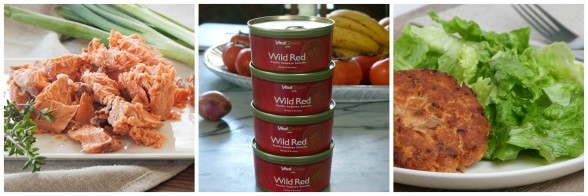

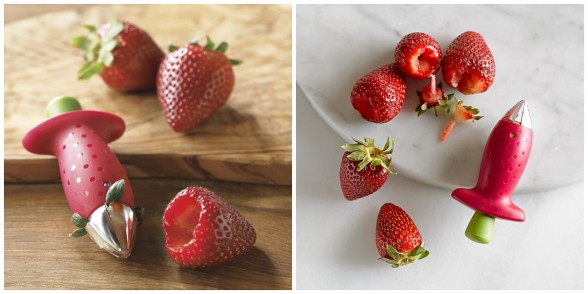
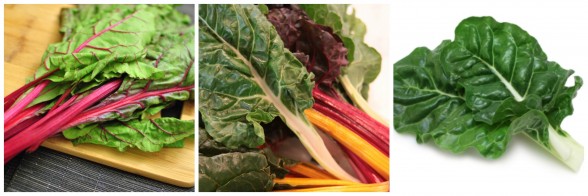
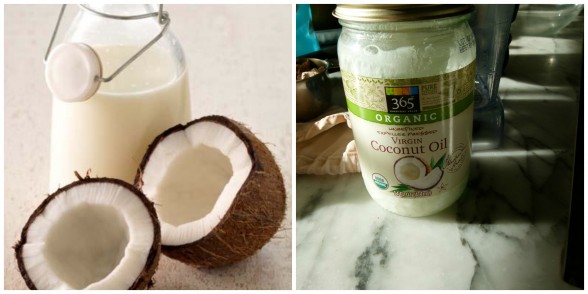

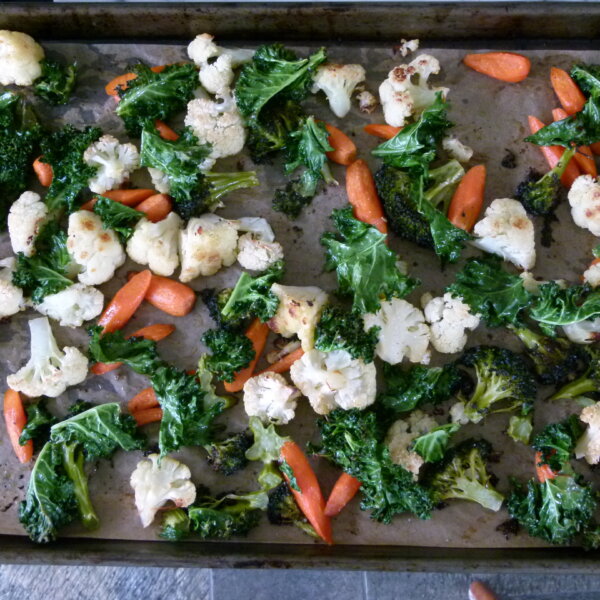







Hi! I would love to hear a little more about how you plan your meals for the week. Every Saturday do you plan out every meal for the week and make a master grocery list? Thanks for being so inspiring!
I know. I really need to write a post on that!! I meal plan every Sunday night. Before I became a cooking instructor, I would only grocery shop once/week and go to the farmers market once/week.
I, too, have been overwhelmed with my provisions and stocked freezer and pantry. I did this same exercise last year and what came out of my kitchen was tasty, creative, and satifying (mostly satisfying due to the frugal factor). I am going to check out Vital Choices – thanks for the tip!
Sounds good, Susan! 🙂
There is an Extra Virgin Coconut Oil that is Organic, Cold-pressed and unrefined in a dark glass bottle. It’s sold by Kelapo, and it’s good.
Whoa! I thought Kelapo was in a dark plastic bottle??? I’m going to check it out pronto! Thanks, Debi!